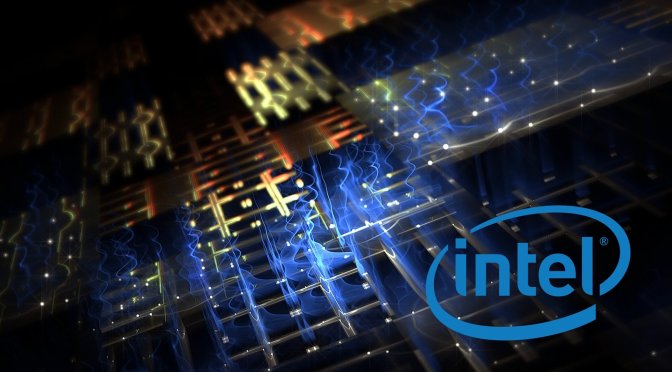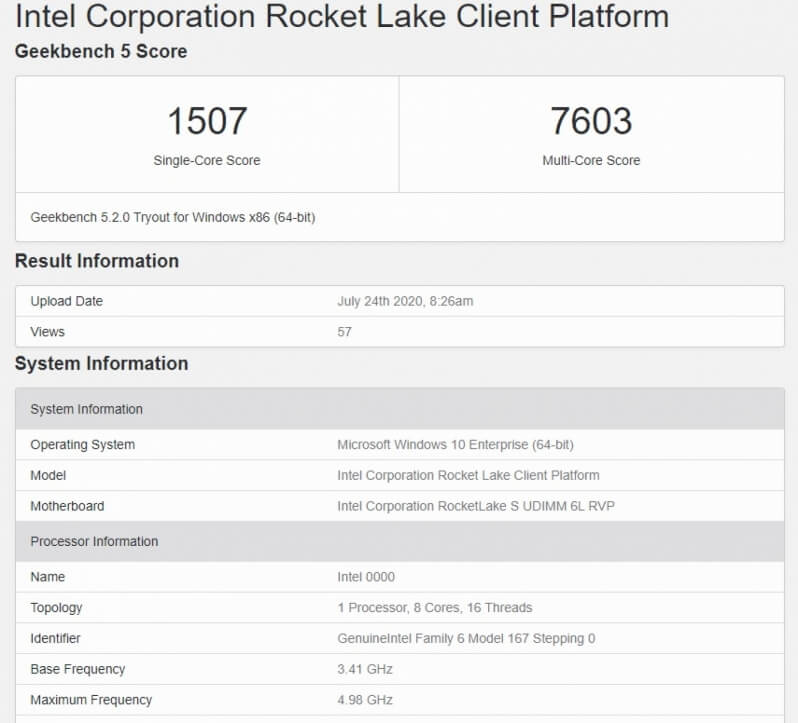Rocket Lake (RKL) is Intel’s new micro-architecture that will be a direct successor to the Comet Lake-S series of desktop CPUs and high-performance mobile devices. These were expected to hit the market by the end of this year, but the roadmap from Intel paints a slightly different picture.
Intel has been using the same iteration of the 14nm FinFET process node with the Skylake Architecture for many years. Comet Lake-S was also fabbed on this aging process node, which has held Intel back in terms of IPC uplift and efficiency gains over AMD’s Ryzen lineup. The Rocket Lake-S desktop platform is hopefully going to be the last CPU architecture to be based on an advanced 14nm process node. Intel’s Rocket Lake will use a 14++ nm ‘back-port’ of the Willow Cove core architecture. Intel plans to focus more on the single-threaded performance with this new CPU lineup.
If recent rumors are to be believed, Rocket Lake will offer fewer cores than today’s Comet Lake-S series of processors, maxing out at eight cores and twelve threads. We have seen previous Rocket Lake engineering samples with 4.3 GHz boost clocks. But according to a new entry, as discovered by @leakbench, the sample shows a 700 MHz performance boost, up to 5.0 GHz boost.
If we compare the result with Intel’s i9-9900K 8-core CPU, this new Rocket Lake sample delivers more single-threaded performance, a 170 point score advantage. However, the multi-threaded performance isn’t very impressive, since it lags behind core i9-9900K’s result, but since this is an early engineering sample, the final boost clocks may vary.
Strangely enough, Intel’s Rocket Lake-S lineup was not mentioned during the Q2 earnings call, and it was also not present in Intel’s press release or Q&A session. Though, the company did confirm that the successor ‘Alder Lake-S’ lineup is going to launch in the second half of 2021, meaning Rocket Lake-S might arrive a bit sooner than previously expected. The series could launch in late 2020 or early 2021.
When it comes to the Rocket Lake-S CPU lineup, I have another important last piece of info to share with you. Few months ago, one renowned VLSI engineer who goes by the name ‘Retired Engineer’ on Twitter, @chiakokhua, tweeted one of his old findings from November 2019 last year. According to him the upcoming Rocket Lake-S processors are going to feature ‘multi-chip modules/MCM’ of core and uncore GPU dies built on different silicon fabrication nodes.
This is speculation from his side, but he has a strong record of accurate prediction in the past, when he spoke about the 3rd gen Ryzen Matisse AM4 processors being multi-chip modules as well. Apparently, it might be possible that Intel is also designing these socket LGA1200-based Rocket Lake processors to feature multi-chip modules, similar to Matisse in some ways. According to the block diagram posted by @chiakokhua, it appears that Rocket Lake-S is a multi-chip module consisting of a 14nm die that holds the ‘CPU cores’; and a 10 nm die that holds the ‘uncore’ components. But in the case of Rocket Lake the uncore die is more advanced that the CPU die.
The CPU die is fabbed on a 14 nm node on Rocket Lake-S, which contains the Willow Cove CPU cores in this die, and a system agent, which are connected together by a Ring-bus interconnect. And the system agent connects to the 10nm uncore GPU die via EMIB. The 10 nm GPU uncore die on the other hand features the Gen12 XE iGPU with up to 96 EUs, a dual-channel DDR4 memory controller, a PCI-Express 4.0 controller, as well as display and media engines. Rocket Lake-S MCM provides a total of 24 PCI-Express lanes, out of which 16 are assigned as PEG (PCI-Express Graphics), and 8 lanes are assigned as chipset bus. Previous gen Comet Lake-S CPU lineup only provided us with 20 lanes.
This is not the first time Intel is taking the MCM approach. Clarkdale, first-gen desktop processor supporting the LGA1156 package was an MCM having a 32 nm CPU die, and a 45 nm uncore graphics and integrated memory controller die. It remains to be seen whether Intel really chooses the MCM approach with the Rocket Lake- S lineup of desktop processors.
Hello, my name is NICK Richardson. I’m an avid PC and tech fan since the good old days of RIVA TNT2, and 3DFX interactive “Voodoo” gaming cards. I love playing mostly First-person shooters, and I’m a die-hard fan of this FPS genre, since the good ‘old Doom and Wolfenstein days.
MUSIC has always been my passion/roots, but I started gaming “casually” when I was young on Nvidia’s GeForce3 series of cards. I’m by no means an avid or a hardcore gamer though, but I just love stuff related to the PC, Games, and technology in general. I’ve been involved with many indie Metal bands worldwide, and have helped them promote their albums in record labels. I’m a very broad-minded down to earth guy. MUSIC is my inner expression, and soul.
Contact: Email


